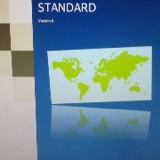Information
-
Document No.
-
Audit Title
-
Client / Site
-
Conducted on
-
Prepared by
-
Location
-
Personnel
25.1 - EQUIPMENT AND FACILITIES (BASE)
-
Any maintenance or repairs to the structure and fabric of the building or equipment must be completed to a satisfactory standard.
25.2 - PREVENTATIVE MAINTENANCE PROGRAMME (BASE)
-
There must be a planned preventative maintenance (PPM) programme that covers all equipment critical to safety, legality and quality, which is fully implemented.
25.3 - MAINTENANCE RECORDS (BASE)
-
A system must be in place to record all maintenance work requested and PPM work completed.
-
Work must be prioritised and completed in the agreed timescales.
-
Procedures must be in place to manage work not completed within agreed timescales.
25.4 - ENGINEERS (BASE)
-
Repairs to or servicing of equipment must be completed by site engineers, approved contractors or the equipment manufacturer.
25.5 - CONTAMINATION CONTROL (BASE)
-
Risk assessments must be completed prior to work commencing to ensure product and packaging is not put at risk.
-
Engineering activities must be controlled. For example welding, drilling, riveting and soldering must not take place on equipment while it is being used for production or on any equipment immediately adjacent, unless suitable hygienic screening is in place.
25.6 - TEMPORARY REPAIRS (BASE)
-
Temporary repairs must be controlled to ensure product is not put at risk.
-
The material used must be suitable e.g. no sticky tape, no cardboard
-
A timescale for a permanent repair must be established and checks performed to ensure this is achieved.
25.7 - ENGINEERING WORKSHOPS AND TOOLS (BASE)
-
Engineering workshops and associated areas must have good standards of fabrication, hygiene and housekeeping.
-
Measures must be taken to ensure that engineering areas do not pose a contamination risk to the rest of the site.
-
This may include for example, although this is not an exhaustive list:<br>- located away from production and storage areas <br>- secure access - swarf mats at their entry points
-
Tools must be kept clean, well maintained and replaced when necessary.
-
Tools and parts must be controlled. A system must highlight and initiate an investigation if a tool or part is missing.
-
Product containers and Customer trays must not be used as general storage containers in these areas.
25.7.1 - ENGINEERING WORKSHOPS AND TOOLS (MEDIUM)
-
Wherever possible, engineering work must take place away from production areas.
-
Engineering and maintenance areas that access directly into production areas must have restricted access.
-
Tools must be captive to the area or adequately cleaned prior to transferring into open food areas.
25.7.2 - ENGINEERING WORKSHOPS AND TOOLS (HIGH)
-
Tools and toolboxes used in High areas must: - be captive to the area or disinfected before transfer into the production area - be checked daily to an inventory of items - ensure small items are stored in a separate section of the toolbox
25.8 - PARTS (MEDIUM)
-
Whilst engineers work on production equipment, small parts must be stored in sealed marked containers, magnetic mats or trays
25.9 - PRE AND POST WORK CHECKS (BASE)
-
Production lines must be fully cleared prior to starting any maintenance activities.
-
After engineering work has been completed, a system must be in place to assess cleaning requirements prior to use in production.
-
Where a cleaning requirement is identified it must be undertaken before production commences and must be recorded.
-
Equipment must be checked and signed back to production by the engineer and production QA (depending on sites procedures) following work and any necessary cleaning.
25.10 - LUBRICANTS (BASE)
-
Only food grade lubricants may be used on food handling or food contact equipment.
-
Information must be available to demonstrate food grade suitability for materials used.














